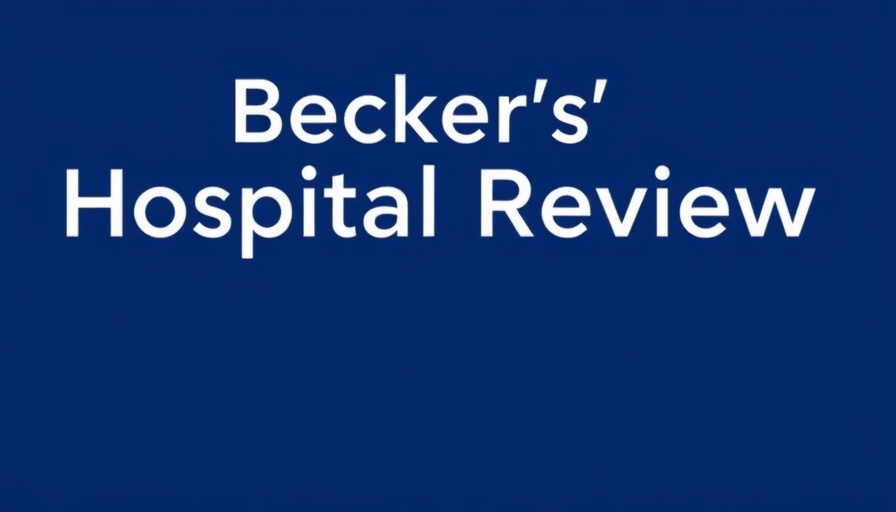
Lake Charles Memorial Health System Welcomes New Revenue Cycle VP
Exciting changes are on the horizon for the Lake Charles Memorial Health System in Louisiana as they welcome Dr. Lany Wahab as their new vice president of revenue cycle. With a rich background in revenue management and patient access, Dr. Wahab is poised to lead the charge in optimizing financial performance and operational efficiency within the health system.
Understanding the Role of Revenue Cycle Management
The revenue cycle is a crucial component of any healthcare organization, influencing not only financial health but also patient experience. For independent healthcare providers like nurse practitioners and family practices, understanding medical billing recovery and effective revenue optimization strategies can directly impact their bottom line. With an increasing focus on healthcare automation and patient engagement tools, practices can now leverage technology to streamline operations.
Dr. Wahab's Impressive Background
Dr. Wahab brings a wealth of experience to his new role, having served as the system director of patient access and revenue operations at the Alameda Health System in California. His previous roles included director of revenue cycle services at MediRevv and management positions at Stanford Health Care, where he honed his skills in navigating the complexities of healthcare finance. Such expertise is invaluable in an era marked by constant changes in Medicare reimbursement policies and the demand for transparent billing practices.
The Impact on Independent Practices
For independent providers, the news from Lake Charles comes at an opportune moment. As healthcare landscapes evolve, leveraging insights from leaders like Dr. Wahab can inform strategies for improving practice efficiency. With tools such as medication management automation and remote therapeutic monitoring (RTM), practices can enhance job satisfaction among medical staff while increasing their operational income.
Engaging Patients with New Strategies
Today's healthcare environment requires not just efficiency but also active patient engagement. Dr. Wahab's leadership may encourage the adoption of telehealth revenue initiatives and programs focusing on aging in place, which resonate well with patients seeking convenience and quality care. Furthermore, innovations like AI phone agents can assist in handling administrative tasks, allowing more time for patient interactions.
Future Predictions for Healthcare Revenue Management
Looking ahead, the direction taken by healthcare systems will increasingly rely on technology and automation solutions. With Dr. Wahab at the helm, we could witness broader adoption of insurance underpayment recovery strategies and new pre-tax benefit plans that are attractive to employees across various healthcare settings.
The Significance of Leadership Changes
Leadership changes often signal a shift in strategy and priorities, especially in healthcare. For stakeholders in independent practices, understanding the implications of such changes is vital. The appointment of a well-versed revenue cycle executive may indicate a trend toward prioritizing financial sustainability and improved patient services in a landscape where healthcare compliance and pharmacy profitability are of utmost concern.
Call to Action: Embrace Change in Your Practice
As the healthcare industry continues to experience rapid changes, independent providers should remain proactive. Exploring practice automation solutions and understanding new healthcare business tools can empower practices to enhance revenue. Engage with financial experts and consider strategies that prioritize practice efficiency while maintaining excellent patient care standards.
Adapting to change not only secures financial health but also positions your practice for sustained growth. Embrace the insights shared by leaders like Dr. Wahab, and take the necessary steps to streamline operations and continue providing quality care.
 Add Row
Add Row  Add
Add 




Write A Comment